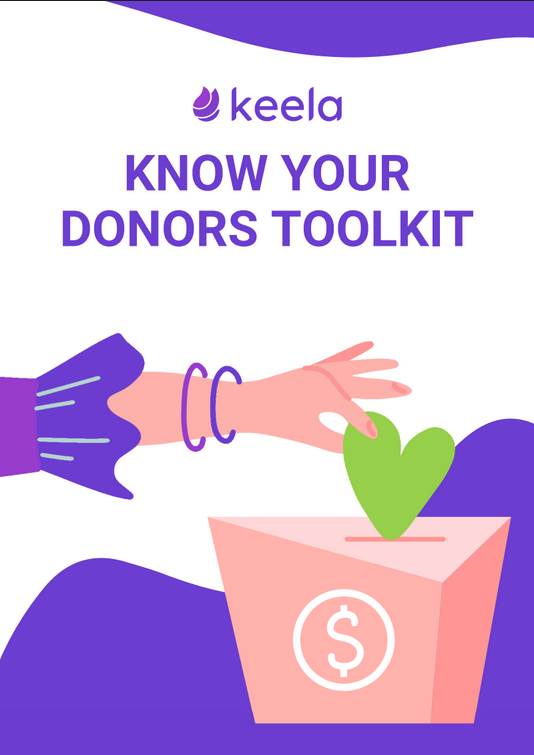3 Best Practices to Make Text Fundraising a Success


Text fundraising provides a variety of benefits for nonprofit organizations. It offers convenience for donors and consistent opportunities for your nonprofit to boost online giving and donor engagement. Plus, text fundraising simplifies the entire donation experience and drives results you can count on.
However, your nonprofit can’t simply leap into text fundraising campaigns and expect immediate success. Instead, you’ll need a concrete fundraising plan in place.
How does text fundraising work?
Like all fundraisers, text-to-give fundraising campaigns require strategies and tools to optimize your approach to raising donations. By creating a robust text fundraising plan and delegating responsibilities among your team members, your nonprofit can increase revenue and retain donors in the long run.
Use these best practices to develop a winning text fundraiser:
- Create a memorable keyword
- Personalize your messages
- Express appreciation
How do texting and giving campaigns work?
Before you launch your text fundraiser, you’ll need access to a fundraising software solution that streamlines the planning and management processes. Conduct research to find a nonprofit text messaging partner with a proven mobile fundraising experience and user-friendly features to take your fundraising strategy to new heights. Once you’ve found the ideal partner, you can implement the following essential strategies with ease. Let’s begin.


Want to Keep Tabs on Current Fundraising Trends?
Use this guide to learn how the nonprofit sector is adapting to the increasingly digital landscape and get tips on how your organization can take advantage of current opportunities.
Create a memorable keyword
Your keyword is the word or phrase supporters will message to a dedicated number to opt into your text messaging campaign. For example, they might text “FEED” to 50551 to donate to feed a child. Rather than choosing an overcomplicated word that could be forgotten or misspelled, choose a simple word related to your fundraising campaign or mission. This makes it easy for donors to sign up to receive your texts and even share your keyword with friends and family.
Keep these tips in mind as you create your campaign keyword:
Keep it brief
A short custom keyword is easier to get right on donors’ first try, allowing them to easily opt into your campaign without experiencing any technical delays. Stick to one word or a brief phrase that is easy to spell. For example, the words “SAVE” or “GIVE” are brief keywords.
Use simple keywords
With text giving, simplicity matters. The custom code used for your donation amount and the number you send the text message should be short and rememberable. The longer or more complicated the code the higher chances are the donor will forget the process. Please be as clear as possible. Make the Code pertinent to the mission of the organization.
Avoid using spaces or special characters
If donors have to spend time navigating their keyboard for a symbol, they might get frustrated and abandon opting into your campaign altogether. Make the opt-in process as simple as possible with a straightforward keyword and refrain from using spaces, exclamation points, number signs, and other special characters.
Make it relevant
A keyword that’s related to your mission or campaign audience is easy to market and remember. For example, a higher education institution that is running a text-to-donate campaign targeting former students might make its keyword “ALUMNI.”
Create distinct keywords for different campaigns
If you run multiple text fundraising campaigns, ensure that you use unique keywords for each to avoid confusion.
Market your keyword and code widely across your channels to get the word out about your next fundraising campaign. For example, you can create engaging graphic designs for social media with instructions on signing up for your text-to-give campaign and add these to a secure fundraising page on your nonprofit’s website.
Personalize your messages
Messages that are tailored to your audience are much more likely to be opened, read, and acted upon. An easy way to add a personal touch to each of your communications is by using segmentation.
Segmentation is the process of using your donor data and dividing your contact list into subgroups based on similar characteristics, ensuring that your messages are highly relevant to your donors’ interests, giving history, fundraising method, and involvement in your organization.


Want to Learn More about Donor Segmentation?
This 3-part guide will walk you through how to ask and track your donor preferences allowing you to understand who your ideal donor is and how to best reach them.
According to Tatango’s guide to text-to-give, you can segment your contacts by a variety of factors, including:
- Donor history (such as recency, frequency, or amount of past gifts)
- Monthly or recurring donors
- The recency of opting into your campaign
- Past event participation
- Volunteer status
- Location
This will help you tap into donors’ unique motivations for supporting your organization and craft your appeals in a way that will most resonate with them. For example, you might find that you have multiple lapsed donors who gave a few times but haven’t given yet this year. To target these donors, you can create a segment that sends reminder messages to renew their gift this year and describes how they can continue to be the hero in your cause—whether that’s by providing life-saving funds for childhood cancer research, donating towards an animal rescue so abandoned pets can find their forever homes or giving to Red Cross’s relief efforts.
Express appreciation
Text fundraising shouldn’t just consist of donation appeals and updates on your fundraising progress. Rather, it should actively recognize donors for their contributions and explain the impact of their support. According to Kwala’s guide to donor communications, thanking donors after they give helps supporters feel valued and appreciated by nonprofit organizations, increasing their desire to make future gifts and build upon their impact.
Use these key tips to incorporate a strong donor recognition strategy into your text messages:
Reference the specific donation amount
Instead of generically stating “Thank you for your donation,” call out the specific donation amount that the donor gave and the fundraising efforts it went towards.
Explain the impact of their contribution
Let donors know how their gift made a difference for your cause. For example, an animal welfare nonprofit might write, “Your gift of $100 to our year-end fundraising campaign provided lifesaving vaccinations to 10 cats in need.” If you’re raising unrestricted funds, tell a story and credit your donors for making the happy ending possible.
Use donor-centric language
Your donor should be credited with helping to solve the urgent problem from your fundraising campaign, so it’s important to express this throughout your message. To do this, opt to use “you” instead of “I” or your organization’s name to highlight the donor as the hero of the story.
Suggest different ways supporters can increase their involvement
If you have fundraising events coming up soon, take this opportunity to inform donors about when this will occur and what problem needs to be solved. You can also let donors know about any volunteer opportunities through their mobile devices if they want to further their involvement in your organization.


Thank and steward your donors with Keela’s ready-to-use templates.
This thank you guide includes 7 Thank You Letter templates to help you turn your donors into lifelong supporters!
Track performance with reporting
All nonprofits understand the data. More information about how your donors and other outreach efforts can improve your business operation and engagement. Make sure you include reporting tools in your larger text-to-give software. You can use reporting to provide the information you need for an analysis of current activities to make adjustments to any future text-to-give campaigns.
Why we love text fundraising
Text-to-give campaigns can increase donor engagement and revenue. 25% of donors complete their donations on mobile devices. With just a few text messages, donors can quickly and easily make a donation from their mobile devices without having to navigate a donation form or leave their current location.
If your nonprofit has thousands of supporters signed onto your text-to-give fundraising campaign, it would be impossible to draft each of these individualized messages. However, with the help of comprehensive text-to-give (fundraising) software, you can leverage automation and schedule-send tools to power these messages off with the click of a button. This will save your nonprofit time and energy, allowing your staff to focus more attention on advancing your organization’s mission.
Plan your next text fundraiser with the help of Keela’s fundraising tools and donor insights.
See how Keela helps nonprofits to better understand their donors and gather the information needed in order to run successful fundraising campaigns.
As you run your text fundraising campaign, actively monitor metrics like open rate, click-through rate, and conversion rate so you can optimize your strategies as needed. Your text fundraising partner should provide real-time data reports for each text message so you can see how it performed among your audience. With fundraising software that has a full suite of user-friendly tools, you’ll be able to raise donations in just a few clicks. Good luck!


About the author:
Mike Snusz
Director of Nonprofit Customer Experience, Tatango
Mike Snusz brings 19 years of digital fundraising experience to his role as Director of Nonprofit Customer Experience at Tatango, a text messaging platform for nonprofits and political campaigns. Prior to Tatango, Mike spent 15 years at Blackbaud leading a team of digital consultants that helped nonprofits improve their online fundraising, monthly giving, email marketing, and peer-to-peer fundraising programs. Mike started his nonprofit career managing the Ride For Roswell from 2003 to 2005 in his hometown of Buffalo, NY.





